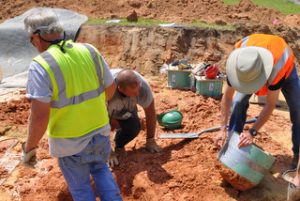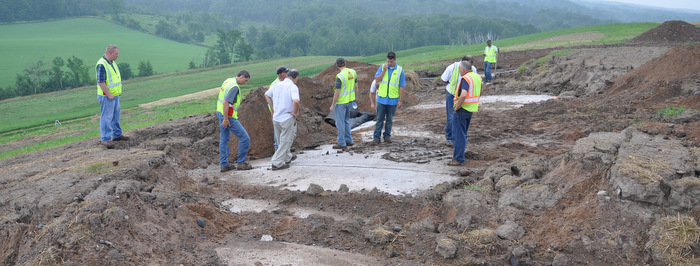DOE Landfill Partnership – LP
Investigators: Craig Benson (University of Virginia), David Kosson, Andrew Garrabrants, and Kevin Brown (Vanderbilt).
Project Objectives:
The DOE Landfill Partnership has two primary objectives:
(1) address technical issues related to on-site disposal facilities (“landfills”) that receive low-level wastes (LLW) and mixed wastes (MW) from DOE projects;
(2) address key stakeholder issues (e.g.,EPA, NRC, states) that influence design and monitoring. Creating technical solutions that build confidence in DOE disposal operations while lowering costs, expediting completion, and enhancing performance is a core principle.
Relevance and Impact to DOE:
Throughout the DOE complex, decommissioning and remediation as well as other waste management activities are contingent on the availability of an on-site disposal facility. Thus, the ability to cost effectively design and construct on-site disposal facilities in an expedient manner has a significant effect on the cost and schedule of decommissioning projects.

These factors are complicated by the notorious difficulty in achieving stakeholder acceptance for a facility meant to contain wastes on-site essentially in perpetuity. Stakeholder acceptance is also affected by contrasting and/or conflicting technical requirements in government regulations (e.g., EPA’s RCRA vs. DOE’s 435.1) as well as a lack of stakeholder confidence in containment systems, performance assessments, and monitoring systems.
The purpose of the DOE Landfill Partnership is to conduct the applied research and to facilitate the technical dialogue needed to build confidence in technologies used for on-site disposal facilities, the methodology used to design and assess the facilities, and the systems used to monitoring long-term performance.
